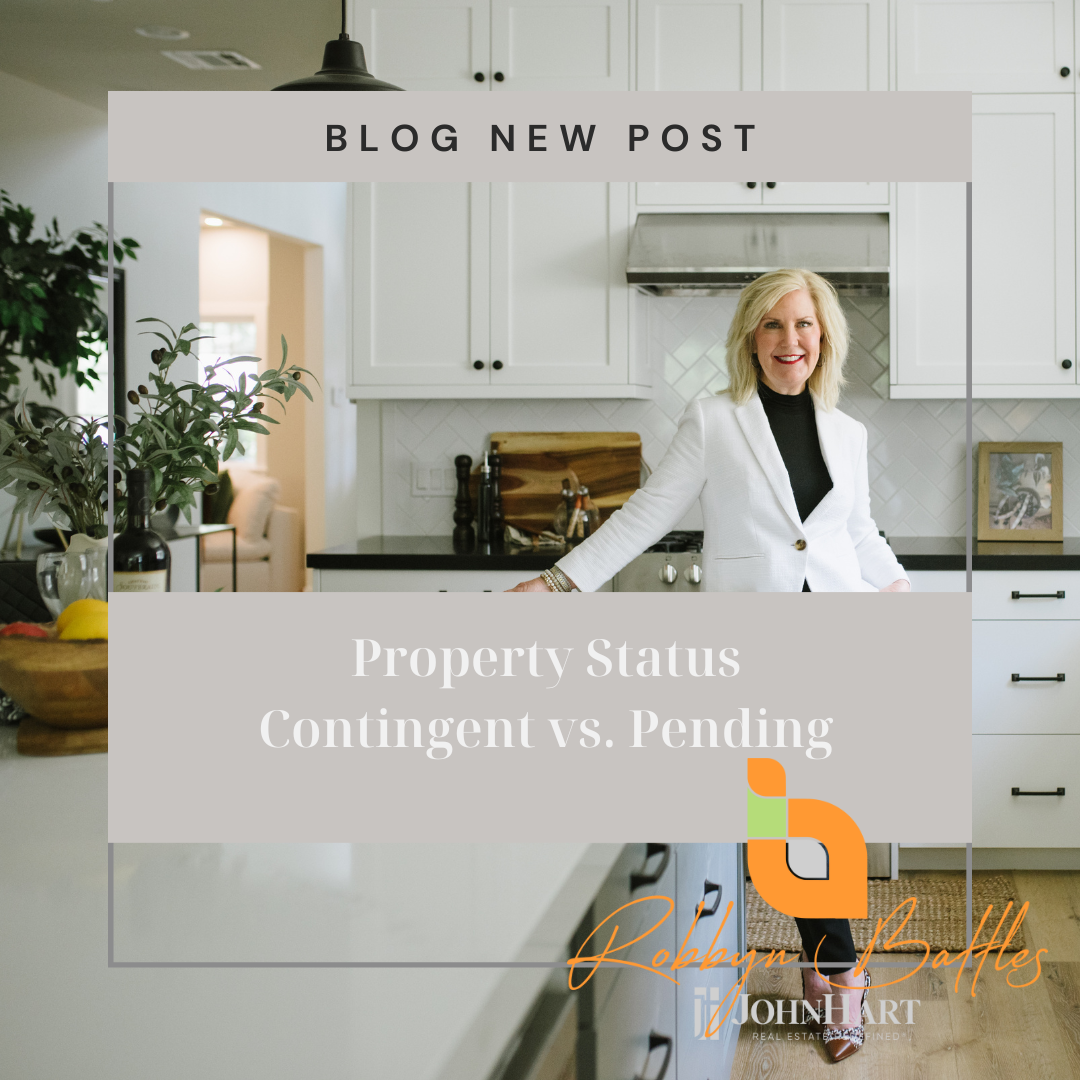
- calendar_month March 8, 2023
- folder Real Estate
Sharing Tags
2023, Altadena, La Canada, La Crescenta, Lake View Terrace, Los Angeles, Montrose, Pasadena, Robbyn Battles
What’s the Difference Between Contingent and Pending?
If you’ve offered a home and the status is now contingent, the seller has accepted the offer, but certain conditions must be met first. Those conditions could be from either side. For instance, a buyer might request an inspection, or the seller could request a specific type of loan from the buyer. Deals can fall apart due to certain contingencies.
Pending status means the offer has been accepted and is getting processed. At this stage, the deal heads to closing. Remember that there are some instances where a pending status could still fall through, but it’s not common.
Types of Contingency Status
Contingent Probate
If the homeowner has died, either the government or the bank that financed the home steps in to sell the property. Probate goes through court, and that information is public. So if you want a private sale or something with less red tape, you might want to look for listings without this contingency.
Contingent: With or Without a contingency terms
A contingency terms means that the buyer or seller can cancel the contract if certain conditions aren’t met by a specific date. If one side doesn’t meet certain conditions, the other side isn’t obligated to complete the agreement. Without this agreement, the sale might take longer to complete, or there’s a chance it could fall through at a later time.
Short-sale Contingent
A short-sale contingent means the seller agrees to sell the home for less than the mortgage balance. The arrangement has to be approved by the lender holding the loan, and it can take much longer to process compared to other types of sales. You might see this on foreclosed properties since banks and lenders handle the property's direct sale.
Contingent: Continue to Show (CCS)
Continue to show means the seller can continue showing the property while certain conditions are met. If you put in an offer, there’s a chance it could get accepted from the seller and move through with a contract. But it depends on other contingencies and agreements with the seller and the current offer.
Contingent: No Show
This is used when the seller agrees not to show the home any longer while contingencies are being met. The seller won’t hold private showings or open houses.
Types of Pending Status
Pending is one step closer to completing the home buying or selling process and is good news for both parties. But that doesn’t mean the sale is complete. There are different types of pending statuses, which can change the game for different circumstances.
Can You Make an Offer on a Contingent or Pending Home?
Sometimes, you can make an offer on a contingent or pending home, but it depends on the status. Some home contingencies and pending offers allow backup offers.
If you’re allowed to make a backup offer, you might move along in the process if the first offer falls through (which it might if it has certain contingencies). Remember that if a sale is pending, there’s a lower chance of accepting your offer because the original sale is likely near finalization.
But if a home has contingencies, you might have a chance to make a serious offer. It’s helpful to have a pre-approval letter for a home loan or plan to pay for the purchase in cash as reassurance to the buyer.
